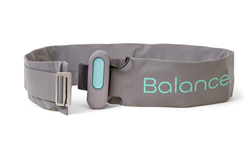
BalanceBelt
The BalanceBelt’s registration as a Class 1 Medical Device is an important step toward helping as many BVH/BVL patients as possible benefit from this unique treatment.
UTRECHT, Netherlands (PRWEB)
December 09, 2021
The BalanceBelt is meant for people suffering from Bilateral Vestibular Hypofunction or Loss (BVH/BVL). These disorders, in which the balance organs in both ears are either impaired or completely non-functional, did not have any sustainable or non-invasive treatment options previously.
Facilitating international distribution
Explaining the decision, Erland Fuglsbjerg, Managing Director of Elitac BalanceBelt B.V. said, “Since we launched the BalanceBelt, we have had growing international interest from patients, physicians and distributors. However, in regions that accept the CE mark, the Class 1 Medical Device classification is required for physicians to prescribe the solution to patients. This registration allows us to enter all the markets that accept Class 1 Medical Devices with a CE mark and reduces many of the costs associated with importing a medical device. This way, we can make the belt available to many more people suffering from BVH/BVL.”
Increased focus on developing medical wearables
The BalanceBelt was developed by Elitac Wearables in collaboration with renowned vestibular expert Prof. Dr Kingma and the Maastricht UMC+ (NL). It is one of several medical wearables developed by the Netherlands-based wearables development company. The company specialises in integrating textiles and electronics, with a particular focus on haptic feedback and sensors.
The BalanceBelt’s MDR registration illustrates Elitac Wearables’ increased focus on developing more wearable medical devices in the future. Co-founder and CEO Merijn Klarenbeek explained, “We see unparalleled potential for wearable technology to improve the lives of people suffering from medical conditions and the standard of medical care.”
“That’s why we are taking steps to achieve ISO 13485 certification for our company. Developing wearables in adherence to this international standard will help ensure that we consistently keep designing, developing and producing medical wearables that are safe to use. We are currently reviewing all our processes and expect to achieve the ISO 13485 certification for our company during the course of 2022.”
“As for the BalanceBelt, its registration as a Class 1 Medical Device is an important step toward helping as many BVH/BVL patients as possible benefit from this unique treatment.”
NOTES TO THE EDITOR
Contact information
Elitac Wearables
Merijn Klarenbeek
Phone: +31 (0)30 20 72 323
Email: press@elitacwearables.com
About Elitac BalanceBelt BV
Elitac BalanceBelt BV is the worldwide distributor of the BalanceBelt, a revolutionary treatment option for patients suffering from severe balance disorders. The slim, lightweight belt with integrated accelerometer and advanced software algorithms uses haptic feedback (vibrations) to help patients find their balance and regain their independence. Clinical trials have shown a significant improvement in the quality of life for people suffering from Bilateral Vestibular Hypofunction and Loss (BVH/BVL).
About Elitac Wearables BV
Elitac Wearables develops wearables from idea to commercially viable product – and any stage in-between – for the medical and safety domains. We specialise in integrating electronics and textiles, with a particular focus on haptic feedback technology and sensors.
Development projects include: BalanceBelt: Giving balance disorder patients back their freedom; NeuroShirt: Allowing surgeons to stay focused and operate more safely; SmartShoulder: Keeping service engineers safe, even in remote areas; Mission Navigation Belt: Helping soldiers stay safer by letting them concentrate fully on their surroundings while navigating.
Research projects include: WEAFING: Developing an electro-active textile that will revolutionise wearables design; GaitKeeper: Making it easier, faster, and safer for above knee amputees to learn how to walk with a prosthesis; 3DNav: Helping visually impaired people move around more safely.
Share article on social media or email:

